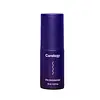What's inside
What's inside
 Key Ingredients
Key Ingredients

 Benefits
Benefits

 Concerns
Concerns

No concerns
 Ingredients Side-by-side
Ingredients Side-by-side

Water
Skin ConditioningDimethicone
EmollientGlycerin
HumectantPropanediol
SolventPolysilicone-11
Cetearyl Olivate
Butylene Glycol
Humectant1,2-Hexanediol
Skin ConditioningSodium Acrylate/Sodium Acryloyldimethyl Taurate Copolymer
Emulsion StabilisingSorbitan Olivate
EmulsifyingPolyisobutene
Carbomer
Emulsion StabilisingAminomethyl Propanol
BufferingCitric Acid
BufferingCaprylhydroxamic Acid
Disodium EDTA
Sodium Hyaluronate
HumectantDimethiconol
EmollientCaprylyl/Capryl Glucoside
CleansingDecyl Glucoside
CleansingWater, Dimethicone, Glycerin, Propanediol, Polysilicone-11, Cetearyl Olivate, Butylene Glycol, 1,2-Hexanediol, Sodium Acrylate/Sodium Acryloyldimethyl Taurate Copolymer, Sorbitan Olivate, Polyisobutene, Carbomer, Aminomethyl Propanol, Citric Acid, Caprylhydroxamic Acid, Disodium EDTA, Sodium Hyaluronate, Dimethiconol, Caprylyl/Capryl Glucoside, Decyl Glucoside
Water
Skin ConditioningDipropylene Glycol
HumectantGlycerin
HumectantCaprylic/Capric Triglyceride
MaskingButylene Glycol
HumectantSqualane
EmollientPentaerythrityl Tetraisostearate
EmollientPolyglyceryl-3 Distearate
EmulsifyingDiethoxyethyl Succinate
SolventIsohexadecane
EmollientSorbitan Stearate
EmulsifyingSorbitan Sesquioleate
EmulsifyingStearic Acid
CleansingHelianthus Annuus Seed Oil
EmollientPanthenol
Skin ConditioningCetyl Alcohol
EmollientGlyceryl Stearate Se
EmulsifyingCentella Asiatica Leaf Extract
Skin ConditioningHexadecane
PerfumingHydroxyacetophenone
AntioxidantCarbomer
Emulsion StabilisingAmmonium Acryloyldimethyltaurate/Vp Copolymer
Decyl Glucoside
CleansingTetradecane
PerfumingArginine
MaskingHydroxyethylcellulose
Emulsion StabilisingHydrogenated Lecithin
EmulsifyingDodecane
PerfumingOctadecane
EmollientSorbitan Oleate
EmulsifyingGlyceryl Stearate Citrate
EmollientBehenic Acid
CleansingSodium Chloride
MaskingPvp
Emulsion StabilisingCaprylyl Glycol
EmollientEthylhexylglycerin
Skin ConditioningEicosane
EmollientStearyl Alcohol
EmollientBehenyl Alcohol
EmollientTrehalose
HumectantMyristic Acid
CleansingMelia Azadirachta Flower Extract
Skin ConditioningMelia Azadirachta Leaf Extract
Skin ConditioningTocopherol
AntioxidantOcimum Sanctum Leaf Extract
Skin ConditioningSodium Acetate
BufferingCoccinia Indica Fruit Extract
Skin ConditioningCurcuma Longa Root Extract
MaskingCorallina Officinalis Extract
Skin ConditioningAloe Barbadensis Flower Extract
EmollientSodium Hyaluronate
HumectantSolanum Melongena Fruit Extract
Skin ConditioningFullerenes
AntimicrobialCitrus Nobilis Peel Oil
MaskingOcimum Basilicum Oil
MaskingLimonene
PerfumingWater, Dipropylene Glycol, Glycerin, Caprylic/Capric Triglyceride, Butylene Glycol, Squalane, Pentaerythrityl Tetraisostearate, Polyglyceryl-3 Distearate, Diethoxyethyl Succinate, Isohexadecane, Sorbitan Stearate, Sorbitan Sesquioleate, Stearic Acid, Helianthus Annuus Seed Oil, Panthenol, Cetyl Alcohol, Glyceryl Stearate Se, Centella Asiatica Leaf Extract, Hexadecane, Hydroxyacetophenone, Carbomer, Ammonium Acryloyldimethyltaurate/Vp Copolymer, Decyl Glucoside, Tetradecane, Arginine, Hydroxyethylcellulose, Hydrogenated Lecithin, Dodecane, Octadecane, Sorbitan Oleate, Glyceryl Stearate Citrate, Behenic Acid, Sodium Chloride, Pvp, Caprylyl Glycol, Ethylhexylglycerin, Eicosane, Stearyl Alcohol, Behenyl Alcohol, Trehalose, Myristic Acid, Melia Azadirachta Flower Extract, Melia Azadirachta Leaf Extract, Tocopherol, Ocimum Sanctum Leaf Extract, Sodium Acetate, Coccinia Indica Fruit Extract, Curcuma Longa Root Extract, Corallina Officinalis Extract, Aloe Barbadensis Flower Extract, Sodium Hyaluronate, Solanum Melongena Fruit Extract, Fullerenes, Citrus Nobilis Peel Oil, Ocimum Basilicum Oil, Limonene
Ingredients Explained
These ingredients are found in both products.
Ingredients higher up in an ingredient list are typically present in a larger amount.
Butylene Glycol (or BG) is used within cosmetic products for a few different reasons:
Overall, Butylene Glycol is a safe and well-rounded ingredient that works well with other ingredients.
Though this ingredient works well with most skin types, some people with sensitive skin may experience a reaction such as allergic rashes, closed comedones, or itchiness.
Learn more about Butylene GlycolCarbomer is a polymer of acrylic acid. Its main role is to create a gel consistency.
A high amount of carbomer can cause pilling or balling up of products. Don't worry, most products contain 1% or less of carbomer.
Decyl Glucoside is a glucose-based surfactant and emulsion stabilizer. It is created by reacting glucose with the fatty acids from plants.
Surfactants help clean the skin by trapping oil, sebum, and dirt to be washed away. As an emulsion stabilizer, it stabilizes the ingredients in a product by preventing them from separating.
This ingredient is biodegradable and non-toxic. This ingredient is commonly found in baby shampoos.
Decyl Glucoside is sometimes used to stabilize the UV filter Tinosorb.
Learn more about Decyl GlucosideGlycerin is already naturally found in your skin. It helps moisturize and protect your skin.
A study from 2016 found glycerin to be more effective as a humectant than AHAs and hyaluronic acid.
As a humectant, it helps the skin stay hydrated by pulling moisture to your skin. The low molecular weight of glycerin allows it to pull moisture into the deeper layers of your skin.
Hydrated skin improves your skin barrier; Your skin barrier helps protect against irritants and bacteria.
Glycerin has also been found to have antimicrobial and antiviral properties. Due to these properties, glycerin is often used in wound and burn treatments.
In cosmetics, glycerin is usually derived from plants such as soybean or palm. However, it can also be sourced from animals, such as tallow or animal fat.
This ingredient is organic, colorless, odorless, and non-toxic.
Glycerin is the name for this ingredient in American English. British English uses Glycerol/Glycerine.
Learn more about GlycerinSodium Hyaluronate is hyaluronic acid's salt form. It is commonly derived from the sodium salt of hyaluronic acid.
Like hyaluronic acid, it is great at holding water and acts as a humectant. This makes it a great skin hydrating ingredient.
Sodium Hyaluronate is naturally occurring in our bodies and is mostly found in eye fluid and joints.
These are some other common types of Hyaluronic Acid:
Learn more about Sodium HyaluronateWater. It's the most common cosmetic ingredient of all. You'll usually see it at the top of ingredient lists, meaning that it makes up the largest part of the product.
So why is it so popular? Water most often acts as a solvent - this means that it helps dissolve other ingredients into the formulation.
You'll also recognize water as that liquid we all need to stay alive. If you see this, drink a glass of water. Stay hydrated!
Learn more about Water